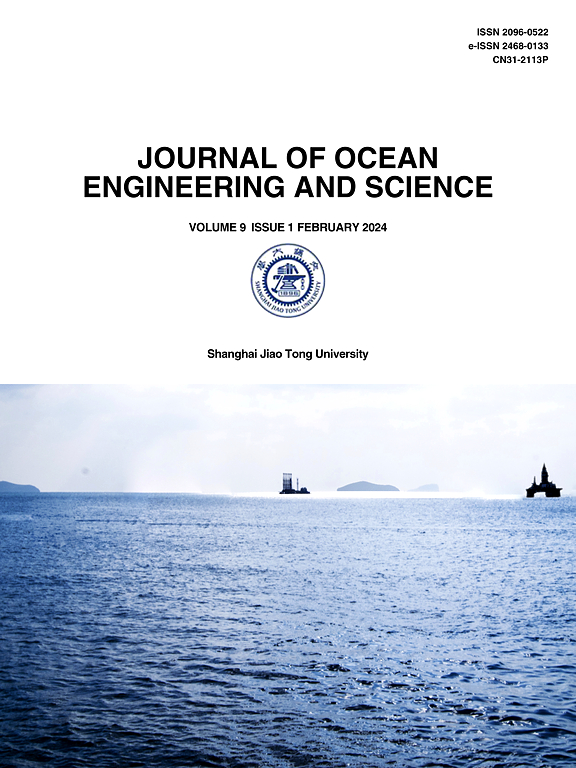利用递归神经网络进行船舶轨迹预测:对数据集、特征和架构的评估
IF 11.8
1区 工程技术
Q1 ENGINEERING, MARINE
引用次数: 0
摘要
海上态势感知任务,如港口管理、避碰和搜救任务,依赖于对船只位置的准确了解。通过自动识别系统(AIS)获得历史船舶轨迹数据,促进了预测方法的发展,最近的重点是通过循环神经网络(rnn)和其他深度学习架构进行轨迹预测。虽然这些方法与基于运动学和聚类的模型相比表现出了良好的性能优势,但由于评估数据集、区域大小、船舶类型和许多其他设计选择的差异,在基于rnn的模型之间进行比较仍然很困难。因此,目前尚不清楚基于高度复杂的网络架构的最新方法是否有必要实现强大的预测性能。在这项工作中,我们提出了一种简单的基于融合的RNN方法来预测血管轨迹,这种方法可以很容易地结合外生变量。我们进行了广泛的烧蚀研究,以测量各种建模选择的影响,包括预处理、损失函数和特征的选择,以及在船舶轨迹预测中首次使用表面电流信息。我们证明,我们的方法在美国沿海的三个大区域实现了最先进的性能,在预测未来三小时时,与竞争方法相比,提高了0.88公里。我们得出的结论是,我们的简单架构可以在产生更低内存成本的同时胜过更复杂的架构。此外,我们表明损失函数的选择和表面电流信息的包含都对预测性能有显著影响。本文章由计算机程序翻译,如有差异,请以英文原文为准。
Vessel trajectory prediction with recurrent neural networks: An evaluation of datasets, features, and architectures
Maritime situational awareness tasks such as port management, collision avoidance, and search-and-rescue missions rely on accurate knowledge of vessel locations. The availability of historical vessel trajectory data through the Automatic Identification System (AIS) has enabled the development of prediction methods, with a recent focus on trajectory prediction via recurrent neural networks (RNNs) and other deep learning architectures. While these methods have shown promising performance benefits over kinematic and clustering-based models, comparing among RNN-based models remains difficult due to variations in evaluation datasets, region sizes, vessel types, and numerous other design choices. As a result, it is not clear whether recent methods based on highly-sophisticated network architectures are necessary to achieve strong prediction performance. In this work, we present a simple fusion-based RNN approach to vessel trajectory prediction that allows for easy incorporation of exogenous variables. We perform an extensive ablation study to measure the impact of various modeling choices, including preprocessing, loss functions, and the choice of features, as well as the first usage of surface current information in vessel trajectory prediction. We demonstrate that our approach achieves state-of-the-art performance on three large regions off the United States coast, obtaining an improvement of up to 0.88 km over competing methods when predicting three hours into the future. We conclude that our simple architecture can outperform more complicated architectures while incurring a lower memory cost. Further, we show that the choice of loss function and the inclusion of surface current information both have significant impact on prediction performance.
求助全文
通过发布文献求助,成功后即可免费获取论文全文。
去求助
来源期刊

Journal of Ocean Engineering and Science
Multiple-
CiteScore
11.50
自引率
19.70%
发文量
224
审稿时长
29 days
期刊介绍:
The Journal of Ocean Engineering and Science (JOES) serves as a platform for disseminating original research and advancements in the realm of ocean engineering and science.
JOES encourages the submission of papers covering various aspects of ocean engineering and science.
 求助内容:
求助内容: 应助结果提醒方式:
应助结果提醒方式:


